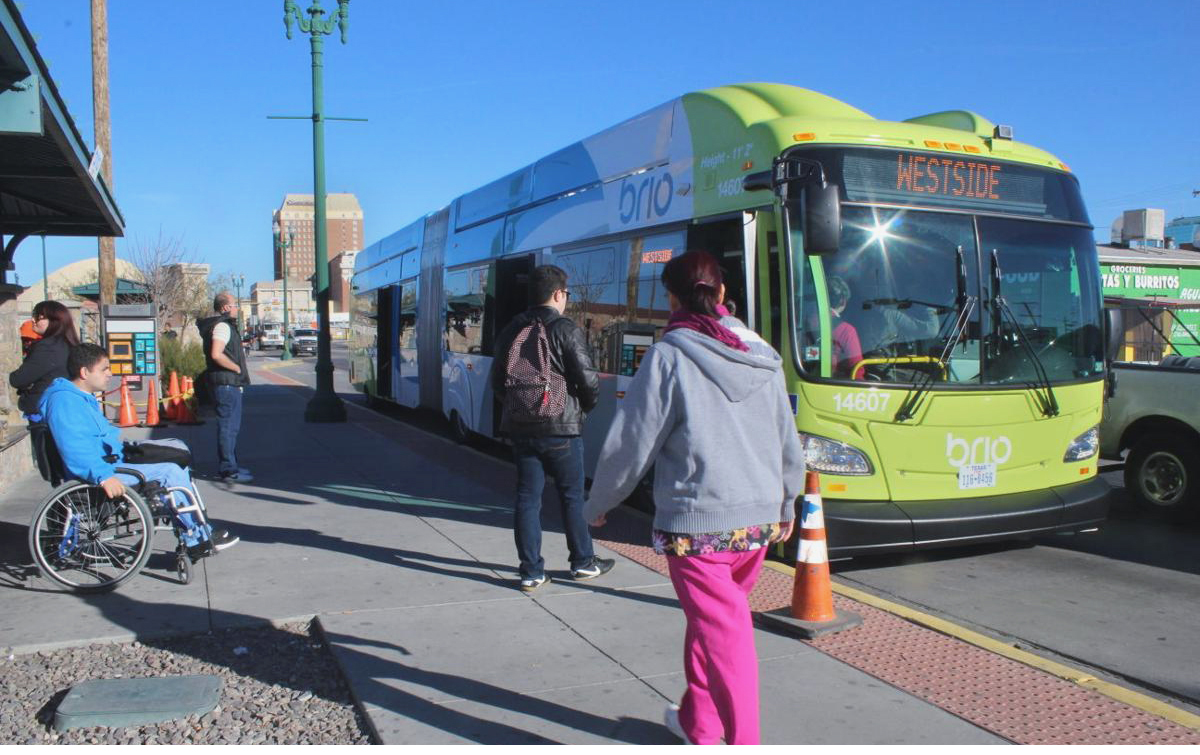Profs studying new transit mode’s effects on locals’ walking habits

Chanam Lee

Wei Li

Marcia Ory
Can an emerging mode of public transit service improve a community’s health?
A team of Texas A&M [urban planning] (http://laup.arch.tamu.edu/) and public health researchers is studying whether a new El Paso, Texas bus rapid transit (BRT) line — a system with dedicated lanes designed to mimic the efficiency of rail transit — changes walking habits of residents who live close to the line’s stations.
“Use of public transportation is associated with increased physical activity, such as residents walking to transit stops, and is considered a promising approach to reduce the risk of obesity and other age-related chronic conditions such as cancer, diabetes, and heart disease,” said Chanam Lee, a professor in the Department of Landscape Architecture and Urban Planning. “Little is known, however, about the physical activity impact of bus rapid transit, an increasingly popular concept that combines the capacity, speed, and reliability of rail transit with the flexibility and lower cost of a conventional bus system.”
Lee is co-heading a 5-year, $2.6 million study funded by the [National Institutes of Health] (https://www.nih.gov/) comparing the walking frequency of El Pasoans who live within a half-mile of BRT stations opening in fall 2018 with those of residents who live elsewhere in the city.
El Paso’s BRT system, [Brio] (http://sunmetrobrio.net/) , will feature more than 20 miles of routes when the new line opens in fall 2018. In addition to traveling on dedicated lanes, the high-capacity buses, which run every 10 minutes during peak hours and every 15 minutes during non-peak hours, have traffic signal-aided priority at intersections.
“The BRT station openings offer a unique, time-sensitive opportunity to evaluate whether, how, and why new BRT service increases physical activity,” said Wei Li, an LAUP professor who is also heading the study with Lee and Marcia Ory, Regents and Distinguished Professor of Environmental and Occupational Health.
Study respondents will monitor their modes of transportation and physical activities using mobile devices such as smartphones, Fitbit activity trackers, or by noting them in a travel diary.
A preliminary survey
To prepare for the project, the researchers conducted a pilot study to examine physical activity levels among riders and non-riders of El Paso’s existing BRT line.
In the pilot study, which had 310 survey respondents, the research team learned that BRT riders reported 10 more minutes of moderate physical activity per week than non-BRT riders, barriers and facilitators of BRT use, and which survey recruitment strategies were successful,
“Results from the pilot study suggest that the BRT system has a large potential to attract latent demands for transit by offering economical, comfortable, fast, and safe services,” said Ory. “It may also lead to more physical activity by system riders.”
In the NIH-funded study, which is expected to provide a much larger pool of respondents, researchers will collect survey data in the spring of 2018, 2019 and 2021.
Additional members of the research team include Xuemei Zhu, associate professor of [architecture] (http://dept.arch.tamu.edu/) ; Oscar Muñoz, director of the college’s [Colonias Program] (http://colonias.arch.tamu.edu/) ; Eufemia Garcia, associate director of the Colonias Program’s Western Rio Grande Region; Rafael Aldrete, director of the Texas Transportation Institute’s [Center for International Intelligent Transportation Research] (https://groups.tti.tamu.edu/ciitr/) ; Samuel Towne, assistant professor of health promotion and community health sciences; Suojin Wang, professor of statistics, and Leah Whigham, associate professor of public health sciences at the University of Texas at El Paso.
Additional project research partners include the Texas A&M Transportation Institute's [El Paso office] (https://tti.tamu.edu/news/a-decade-later-ttis-el-paso-office/) and [Sun Metro] (http://www.sunmetro.net) , El Paso's public transit provider.
Richard Nira
rnira@arch.tamu.edu
Previous post
Next Post
Tags
- archone gallery
- coa gallery
- interdisciplinary
- landscape architecture & urban planning
- laup gallery
- planning
- research
- rss
- transportation
- wellness
Related Posts

Poorly maintained walking surfaces hinder elderly fitness

Oct. 29 symposium spotlights college, faculty research

Oct. 23 symposium spotlighted college, faculty research

Zhu heading physical activity study project
Follow Us
Facebook Twitter Vimeo Youtube Flickr RSS
Recent Posts

Planning prof heads study of disaster housing aid

A message from the dean

Former student remembered as expert planner

Leading educator named new head of Architecture Dept.






_thumbnail_small.png)
